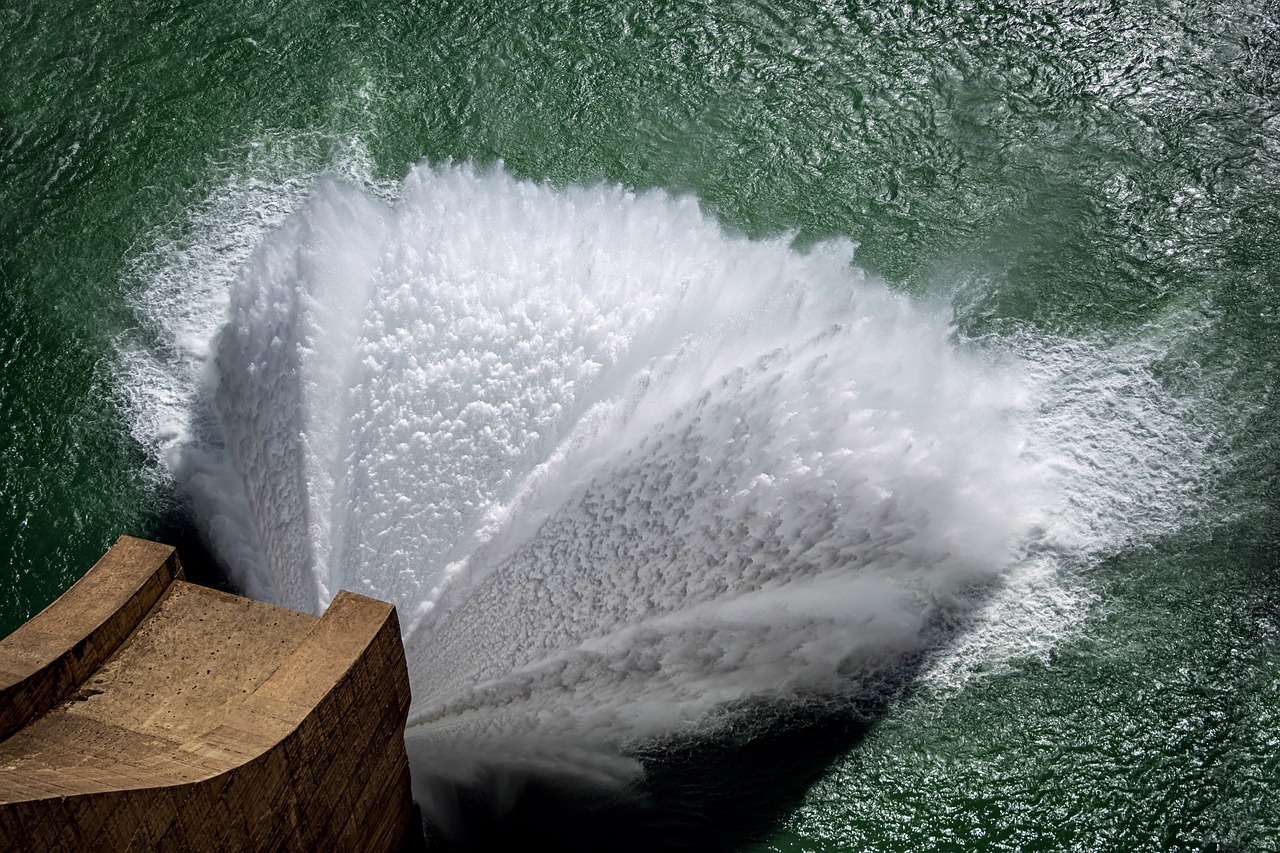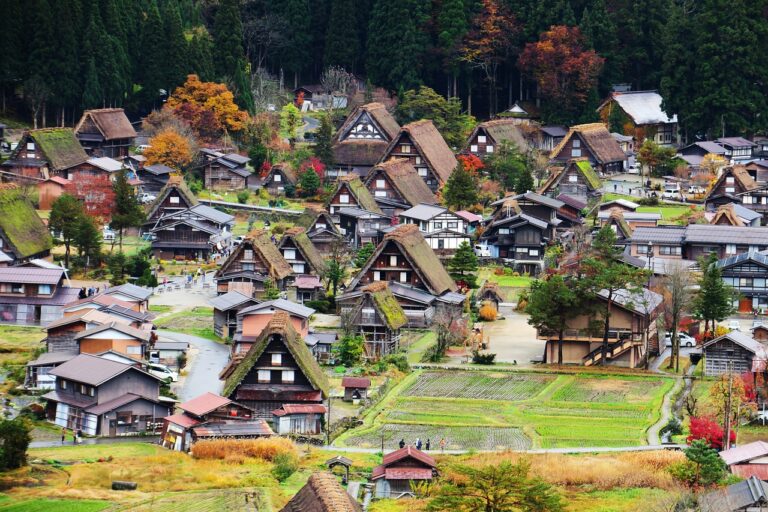Top 10 Largest Dams In The World (2025)
Do you know the 10 largest dams in the world? See here what are the biggest dams ever built by man and their dimensions. Dams are some of the largest engineering structures built around the world, which serve to retain large amounts of water.
Dams are also some of the most essential structures for humans, as they provide irrigation, and electricity and help to control the flooding of the rivers by which they are built.
For this list, we chose to organize the 10 largest dams in the world according to the volume of their reservoirs.
Top 10 Largest Dams In The World
10. Gardiner Dam
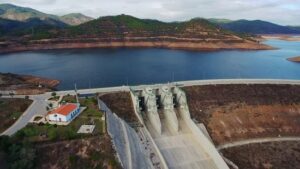
- Location: Saskatchewan, Canada
- Reservoir volume: 9.4 km³
- Structure height: 64 meters
- Structure length: 5,000 meters
- Dam Type: Embankment
Gardiner Dam is Canada’s largest land dam and one of the largest landfill dams in the world. The dam is located south of Saskatoon, on the South Saskatchewan River. Gardiner was completed in 1967 and created Lake Diefenbaker, today the dam’s reservoir. Lake Diefenbaker has a capacity of 9.4 cubic kilometers.
The main objective of the Gardiner Dam is to efficiently use the waters of the South Saskatchewan River for irrigation, recreation, urban water supply, and electricity. The Gardiner Dam now provides irrigation for some 40,468,564 hectares of land, which has allowed the growth of new crops in the region, including beans, peas, and fava beans.
The Gardiner Dam was named after James G. Gardiner, the former Prime Minister of Saskatchewan, and Lake Diefenbaker was named after former Canadian Prime Minister John G. Diefenbaker, who initiated the plans for the dam.
9. Nurek Dam
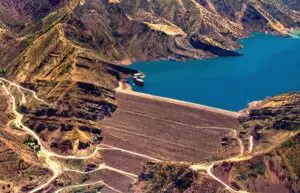
- Location: Tajikistan
- Reservoir volume: 10.5 km³
- Structure height: 300 meters
- Structure length: 700 meters
- Dam type: landfill
Although the Nurek Dam is not as big as the other dams on this list, it is the tallest dam in the world, 300 meters high. The Nurek dam is located on the other side of the Vakhsh River, which is the largest river in Tajikistan.
Nurek is one of five hydroelectric dams along the Vakhsh River. Of the five hydroelectric dams, the Nurek Dam provides more electricity, about 3,000 megawatts – this represents about 75% of Tajikistan’s electricity needs.
The Nurek Dam is used to irrigate 650,000 hectares of agricultural land across Tajikistan.
8. Tarbela Dam

- Location: Khyber Pakhtunkhwa, Pakistan
- Reservoir volume: 14.3 km³
- Structure height: 14.3 km³
- Structure length: 2,743.2 m
- Dam type: landfill
The Tarbela dam, located in Pakistan, is the largest land dam in the world. The dam created the Tarbela Reservoir, which currently has a capacity of 14.3 cubic kilometers. The Tarbela dam was built on the Indus River.
Before the dam was built in the late 1960s until the late 1970s, the flow of the Indus River was unpredictable. This made Pakistan’s agricultural income uneven, especially during the country’s main growing season.
The Tarbela dam is currently in its fifth extension, which will increase the dam’s electricity generation capacity by 1,410 megawatts.
7. Fort Peck Dam

- Location: Montana, USA
- Reservoir volume: 22,774 km³
- Structure height: 76 m
- Structure length: 6,409 m
- Dam type: hydraulic landfill
Fort Peck Dam is another large dam located along the Missouri River in the United States. The Fort Peck plant has been in operation since 1940 and produces an annual average of 2.6 million megawatts/hour of electricity. Lake Fort Peck, the reservoir created by the dam, is the fifth-largest artificial lake in the United States.
The Fort Peck dam supplies much-needed water to Montana, which suffered severe droughts before the dam was completed in 1940. The Fort Peck dam also facilitated navigation on the Missouri River and the dam was the first to be built in the Missouri River basin.
The Fort Peck dam was commissioned by President Franklin D. Roosevelt during the Great Depression. The construction of the Fort Peck dam provided jobs for more than 50,000 people.
6. Oahe dam
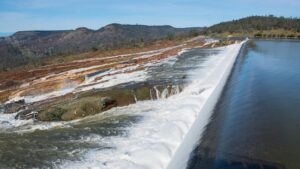
- Location: South Dakota, USA
- Reservoir volume: 28,539 km³
- Structure height: 75 m
- Structure length: 1,100 m
- Dam type: landfill
The Oahe Dam was built by the US Army Corps of Engineers between the late 1940s and the late 1950s. The dam forms Lake Oahe, which is the fourth-largest reservoir in the United States. Lake Oahe has a capacity of 29 cubic kilometers.
The Oahe dams generate most of the electricity for the north-central United States. The dam and the lake were named after the Indian word Sioux Oahe, which means “a foundation” or “place to stand”.
The Oahe Dam provides enough electricity to supply more than 259,000 homes annually.
5. Garrison dam
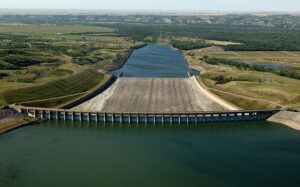
- Location: North Dakota, USA
- Reservoir volume: 29,383 km³
- Structure height: 64 m
- Structure length: 3,444 m
- Dam type: landfill (laminated landfill)
The Garrison Dam is another major dam in the United States and one of the 10 largest dams in the world, it is located on the Missouri River. The reservoir formed by the Garrison Dam is called Lake Sakakawea, which has a volume of 29 cubic kilometers. Sakakawea Lake is the third-largest reservoir in the United States.
The Garrison Dam is the fifth largest land dam in the world and has a height of 64 meters and a length of 3,444 meters.
Although the Garrison Dam is an important source of energy and irrigation for the surrounding areas, the construction of the dam has displaced Native Americans and flooded their agricultural land.
4. Three Gorges Dam
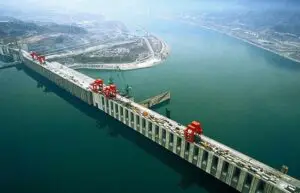
- Location: Yiling District, Yichang, Hubei, China
- Reservoir volume: 39.3 km³
- Structure height: 181 m
- Structure length: 2,335 m
- Dam Type: Gravity
Overall, the Three Gorges Dam in China is considered the largest dam in the world (but we have organized this list by reservoir volume). The Three Gorges Dam is the largest hydroelectric plant in the world and has an installed capacity of 22,500 megawatts.
Although the Three Gorges Dam can impress both in size and in power, it is considered one of the biggest environmental disasters in the world. The construction of the Three Gorges Dam displaced more than 1.2 million people, caused flooding in nearby towns and cities, polluted water and nearby land, threatened local plants and animals, and increased seismic activity in the area.
3. Atatürk Dam
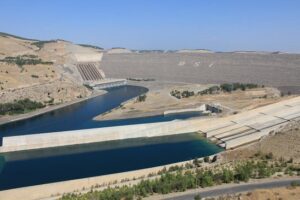
- Atatürk Dam
- Location: Anatolia Region, Turkey
- Reservoir volume: 48.7 km³
- Structure height: 169 m
- Structure length: 1,819 m
- Dam Type: Embankment
The Atatürk dam is located on the Euphrates River in southeastern Turkey. The Atatürk Dam is the largest of the 22 dams and 19 hydroelectric stations found along the Euphrates and Tigre rivers. The dam’s reservoir has a volume of 48.7 cubic kilometers. The Atatürk Dam is quite large, with a height of 169 meters and a length of 1,819 meters.
The Atatürk Dam is part of the Southeast Anatolia Project (GAP), which is a network of dams, hydroelectric stations, and irrigation channels built in the Euphrates, Tigre, and Upper Mesopotamia basins.
The Atatürk Dam was originally called the Karababa Dam but was renamed to honor the founder of the Turkish Republic, Mustafa Kemal Atatürk.
2. Aswan Dam
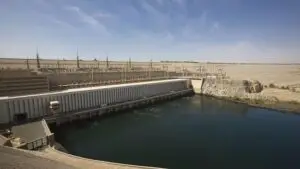
- Location: Aswan, Egypt
- Reservoir volume: 132 km³
- Structure height: 111 m
- Structure length: 3,830 m
- Dam Type: Embankment
The High Aswan Dam is located near Aswan, Egypt, near the border with Sudan. The high Aswan dam is across the Nile and its reservoir is called Lake Nasser, which is one of the largest artificial lakes in the world. Lake Nasser has a capacity of 132 km³ and water is used to irrigate the land back from Egypt and Sudan.
The Upper Aswan Dam was completed in 1970 and, since then, the dam has helped to control the annual flooding of the Nile River. In addition, the Aswan High Dam provides about half of Egypt’s energy source.
When the Aswan High Dam was built, the old Abu Simbel temple complex, built in the 13th century BC, had to be relocated.
Read Also: Top 10 Deepest Rivers in the World
1. Guri Dam

- Location: Necuima Canyon, Bolívar, Venezuela
- Reservoir volume: 135 km³
- Structure height: 162 m
- Structure length: 7,426 m
- Dam type: Gravity/landfill
The Guri dam in Bolívar, Venezuela, is the largest in the world based on the volume of its reservoir. The dam’s reservoir can hold up to 135 cubic kilometers of water. The Guri Dam is also one of the highest dams in the world, with a height of 162 m.
In addition to containing the Caroni River, the Guri Dam is also a hydroelectric plant and the second largest in the world based on installed capacity, which is 10,235 MW. The Guri Dam provides about 73% of Venezuela’s energy needs.
The Guri dam provides about 12,900GW / h of energy to the entire country of Venezuela.
